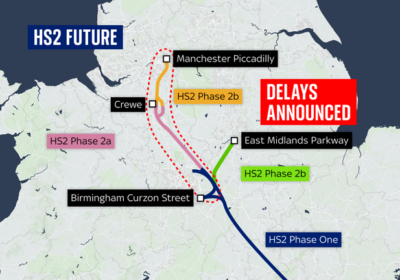Forecasts predicting strong population growth have been a fixture of the Office of National Statistics (ONS) for some years and last month was no exception with the ONS indicating a rise in the number of households from 22.9 million to 26.9 million by 2041. No news there then, another day another announcement about the country’s population bubble.
Well, not exactly. The forecast is actually a downward revision and has consequences for those less comfortable with the UK Government’s bullish target of 300,000 new homes a year. Previously the ONS anticipated an increase in new household formations of 210,000 a year. Now this has been revised down to 159,000 – a 24 percent fall on previous figures.
This is the problem with forecasts, they have a tendency to be wrong. You only have to cast an eye at the world that economists inhabit to learn that maxim. The issue here though is that these forecasts inform planning and housing policy. They are the very foundation of the growth planning which will shape the country over the next two decades and are what drives the Government’s belief that the industry should be building 300,000 homes a year.
Already there is push back. Greater Manchester’s mayor Andy Burnham has asked for a review of the Government’s housing targets. If a city region which has been historically pro-growth is questioning the housing numbers, then it won’t take long for the more conservative with a small c parts of the country to start pushing back.
Such calls lend further credibility to those who maintain that the UK isn’t undersupplied with homes. The academic, Danny Dorling has long argued that the problem with the UK housing stock is not the lack of it, but the lack of occupation within it.
The reality is somewhere in between. There is not national housing crisis as such, but a very acute local one and there is not one single contributing factor that can be pointed to as to why we’re in a situation where there is a drastic undersupply of affordable homes.
Furthermore, whether the correct figure is 300,000 or not, there has been a consistent under supply in certain parts of the country for some time and this has a lag effect on household formation. For instance, the number of adults living with their parents has risen exponentially according to figures compiled by Shelter. That has lots of social consequences from job mobility, marriages and how many pets one might seek to own in the future, social issues I’ll dwell on more in a future blog post.
One final point. Even if 300,000 proves to be an overshoot. It’s better to have more planned capacity in the system because not all is realisable at any one point. Look at Capital today. According to the Centre for London, land equivalent to the size of Lambeth has planning permission for development but there is no sign of the diggers.
So in conclusion, whilst 300,000 may not be the right number it doesn’t mean we shouldn’t be aiming high. It’s a good place to start; better to plan for more and have margin for error.










